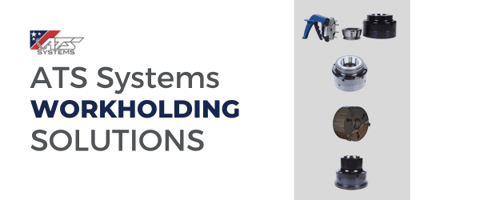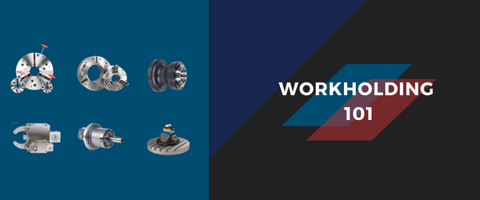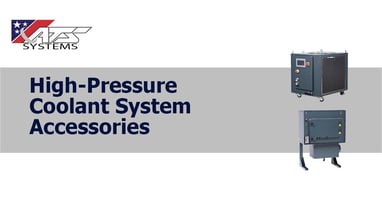Workholding devices are vital in enabling precise and efficient machining operations. Here are some...
High-Pressure Coolant Systems for CNC Machines
High-Pressure Coolant Systems for CNC Machines
In the manufacturing industry, there is a constant pursuit for increased productivity and efficiency. Machine tools play a crucial role in this pursuit, and implementing cutting-edge technologies is essential to optimize their performance. One such technology that has revolutionized the machining process is the High-Pressure Coolant (HPC) system. In this blog, we will delve into the world of HPC systems, exploring their benefits, working principles, and the industries they are transforming.
The Need for High-Pressure Coolant Systems:
Traditional coolant systems have been used for decades, where coolants were applied at low pressures to lubricate and cool the cutting tool and workpiece. However, as demands increased, more than a conventional coolant system was needed to meet the requirements of the manufacturing processes and modern CNC lathes and machines. The need for faster cutting speeds, improved chip control, better surface finishes, and enhanced tool life called for a more advanced solution. This is where High-Pressure Coolant Systems entered the picture. The recommended applications include milling, drilling, turning, and grinding.
How High-Pressure Coolant Systems Work:
High-pressure coolant Systems, as the name suggests, deliver coolant at significantly higher pressures than conventional systems. Instead of applying coolant at around 50-100 psi (pounds per square inch), HPC systems can sometimes deliver pressures ranging from 1,000 to 3,000 psi.
The system has three main components:
- Coolant Pump: At the heart of the HPC system lies a powerful pump that pressurizes the coolant. These pumps are specially designed to handle the high pressures and flow rates required in machining applications.
- Distribution System: The pressurized coolant is distributed to the cutting tool through pipes, hoses, and connectors. Some machines have rotary unions that allow for continuous tool rotation while maintaining the coolant supply.
- Nozzle or Toolholder: The coolant is delivered to the cutting zone through a specially designed nozzle or directly through the tool holder. These nozzles are strategically positioned to optimize the cooling and lubrication of the cutting tool and workpiece.
Benefits of High-Pressure Coolant Systems:
The implementation of High-Pressure Coolant Systems offers numerous advantages, transforming the machining process in several ways:
- Improved Heat Dissipation: High-pressure coolant efficiently removes heat generated during cutting, preventing tool overheating, and extending tool life.
- Better Chip Control: The increased pressure aids in breaking and flushing away chips from the cutting zone. This leads to better chip control and prevents chip recutting, which can cause tool wear and surface finish issues.
- Enhanced Surface Finish: HPC systems can produce superior surface finishes due to reduced cutting temperature and improved chip evacuation.
- Higher Productivity: With the ability to run at higher cutting speeds and feeds, HPC systems significantly enhance the productivity of machine tools.
- Extended Tool Life: By reducing tool wear and optimizing cutting conditions, HPC systems help prolong tool life, reducing tooling costs in the long run.
Applications Across Industries:
High-pressure coolant Systems find applications across various industries, including aerospace, automotive, medical, die, and mold. Any application and material can benefit from implementing HPC systems.
High-Pressure Coolant Systems have emerged as a game-changer in the manufacturing industry, especially in machine tools. Their ability to enhance productivity, improve surface finishes, extend tool life, and optimize cutting conditions has made them an asset for forward-thinking manufacturers. As technology advances, we can expect further innovations in HPC systems, leading to even greater efficiency and precision in the machining process.
.png)



